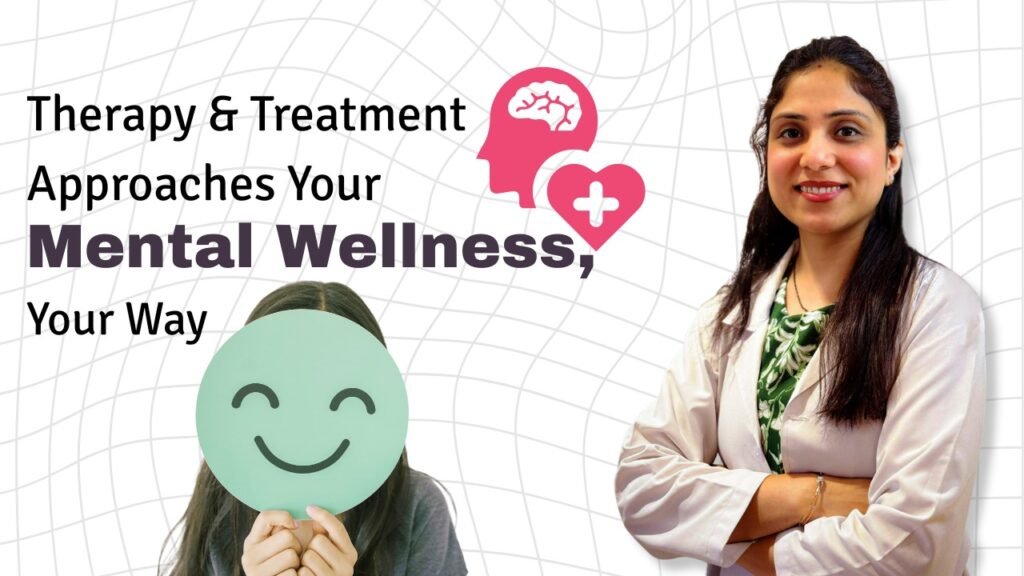Understanding Depression and Mood Disorders: A Guide to Mental Wellness
Understanding Depression and Mood Disorders: A Guide to Mental Wellness Written by Dr. Sakshi (MBBS, MD Psychiatry) Psychiatrist | Mental Health Expert Mental health is just as crucial as physical well-being, and one of the most prevalent mental health challenges is depression—often misunderstood, underdiagnosed, and undertreated. Alongside it, mood disorders like bipolar disorder, dysthymia, and cyclothymia impact the way individuals think, feel, and function in daily life. Let’s explore what these conditions entail, how they manifest, and most importantly, how they can be managed. What Is Depression? Depression is more than just feeling sad. It is a clinical condition marked by a persistent low mood, lack of interest in activities, fatigue, feelings of worthlessness, and even thoughts of self-harm. It affects how a person eats, sleeps, and interacts with others. People of all ages can experience depression, and it often coexists with other health conditions or life stressors. Common Symptoms of Depression: Persistent sadness or emptiness Loss of interest or pleasure in activities Significant changes in appetite or weight Sleep disturbances (insomnia or oversleeping) Fatigue or lack of energy Feelings of guilt or worthlessness Difficulty concentrating Thoughts of death or suicide If these symptoms last more than two weeks and interfere with daily life, it’s time to seek help. Types of Mood Disorder While depression is the most common mood disorder, several others fall under this category: Bipolar Disorder: Marked by episodes of extreme mood swings, from depressive lows to manic highs. Dysthymia (Persistent Depressive Disorder): A chronic form of depression with less severe but longer-lasting symptoms. Cyclothymia: Similar to bipolar disorder but with milder mood fluctuations. Seasonal Affective Disorder (SAD): A type of depression related to changes in seasons, usually occurring in winter months. Premenstrual Dysphoric Disorder (PMDD): A severe form of premenstrual syndrome with mood symptoms. Causes and Risk Factors Mood disorders can result from a combination of genetic, biological, environmental, and psychological factors. Some common contributors include: Family history of mental illness Brain chemistry imbalances Hormonal changes Trauma or abuse Chronic stress or medical illness Understanding these factors can help with early detection and preventive care. Diagnosis and Treatment A qualified psychiatrist evaluates the duration, intensity, and impact of symptoms to diagnose a mood disorder. Early intervention can significantly improve outcomes. Treatment options may include: Many people hesitate to seek help, fearing stigma or judgment. I want you to know—therapy is a strength, not a weakness. It’s a conscious choice to prioritize your mental health and take control of your well-being. Psychotherapy: Cognitive-behavioral therapy (CBT), interpersonal therapy (IPT), or psychodynamic therapy. Medication: Antidepressants or mood stabilizers, depending on the condition. Lifestyle Adjustments: Regular exercise, balanced diet, mindfulness practices, and sleep hygiene. Support Systems: Connecting with friends, family, or support groups. It’s important to remember that each individual’s treatment plan is personalized based on their symptoms and needs. living with a Mood Disorder Living with depression or a mood disorder is challenging but manageable. With the right support and treatment, individuals can lead fulfilling and productive lives. Regular follow-ups with a mental health professional, a healthy lifestyle, and emotional awareness are key to long-term stability. When to Seek Help If you or someone you know shows signs of depression or a mood disorder, don’t hesitate to reach out. Early support can prevent complications and reduce suffering. Mental health professionals are trained to listen, guide, and walk with you toward healing. Final Thoughts Mood disorders are real, common, and treatable. Acknowledging emotional pain is not a weakness—it’s the first step toward healing. Mental wellness begins with understanding, compassion, and timely care. If you’re struggling, know that help is available and recovery is possible. *This blog is for informational purposes and should not replace professional medical advice. If you’re in distress, please consult a licensed psychiatrist or therapist near you.


